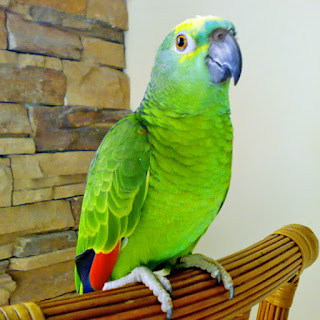---------------------------------------------------------
Imidox® is an injectable solution that cures redwater (Babesiosis) and tick-borne gallsickness (Anaplasmosis) in cattle. It can be used in cattle for the prevention of Asiatic redwater for up to 4 weeks and African redwater for up to 8 weeks. Imidox® is also indicated for the treatment of equine and canine Babesiosis.
----------------------------
Imidocarb dipropionate 120 mg, excipients .q.s.ad. 1 mL
Indications
For the treatment and prevention (before the introduction of livestock to areas of risk) against piroplasmosis, anaplasmosis (both also known as "tick fever"), ehrlichiosis, hepatozoonosis and cytauxzoonosis.
Dosage and Administration
Piroplasmosis: cattle, sheep and goats: 1 ml/100 kg; horses: 2 mL/100 kg; dogs and cats: 0.25 mL/10 kg. Anaplasmosis and piroanaplasmosis: cattle, sheep and goats: 2.5 mL/100 kg; Ehrlichiosis: dogs: 0.5 mL/10 kg of b.w.; Cytauxzoonosis: cats: 0.2 mL/10 kg of b.w. Apply through intramuscular route in horses, and preferably subcutaneously in the dorsal area of cattle, sheep, goats, dogs and cats.---------------------------
COMPOSITION:
Contains per ml:Imidocarb dipropionate 120 mg
DESCRIPTION:
Imidocarb dipropionate is highly active against infections caused by adult and immature stages of Babesia in cattle, sheep, horses and dogs, against Anaplasma infections in cattle and against Ehrlichia canis infections in dogs. The prolonged action of Imidocarb dipropionate exerts a prophylactic effect against Babesia infections for up to 6 weeks.INDICATIONS:
Imidocarb 120 Inj. is indicated for the treatment and prevention of Babesiosis in cattle, sheep, horses and dogs, for the treatment of Anaplasmosis in cattle and Ehrlichiosis in dogs.CONTRA-INDICATIONS:
Do not administer to extremely weak animals. Do not use in ewes in lactation if milk is intended for human consumption.SIDE EFFECTS:
A painful, inflammatory reaction may be seen at the injection site, even during a few days. Increased salivation, nasal discharge and vomiting can be seen shortly after injection. Some dog and sheep breeds can show transient side effects.INCOMPATIBILITY WITH OTHER DRUGS:
Do not combine with choline-esterase-inhibiting drugs, pesticides or other chemicals.DOSAGE AND ADMINISTRATION:
For subcutaneous or intramuscular injection.Treatment:
- Cattle : 1 ml per 100 kg bodyweight. In treating mixed infections due to Anaplasma and Babesia, administer 2.5 ml per 100 kg bodyweight.
- Sheep : 0.5 ml per 50 kg bodyweight.
- Horses : 2 ml per 100 kg bodyweight (intramuscular injection is preferred). In most cases, a single dose will effect a complete cure, but the treatment of B. equi infections in horses may require 2 doses at an interval of 24 hours.
- Dogs : 0.25 ml per 10 kg bodyweight. In treating mixed infections due to Ehrlichia and Babesia, administer 0.5 ml per 10 kg bodyweight, 2 doses at an interval of 14 days.
Prevention:
- Cattle : 2.5 ml per 100 kg bodyweight. A single dose will prevent Babesiosis for up to 4 weeks depending on the severity of the challenge and species involved.
- Horses : 2 ml per 100 kg bodyweight (intramuscular injection is preferred).
- Dogs : 0.5 ml per 10 kg bodyweight. A single dose will prevent Babesiosis for up to 4 weeks.
- Sheep : 1 ml per 50 kg bodyweight.
WITHDRAWAL PERIOD:
Meat : 90 daysMilk : 7 days
STORAGE:
Store in a dry, dark place between 8 °C and 25 °C.Keep medicine away from children.
PACKING:
50 ml multidose vial, packed in individual box (105 vials per box).-------------------------
A comparison of the efficacy of imidocarb dipropionate and tetracycline hydrochloride in the treatment of canine ehrlichiosis.
Abstract
------------------------















































